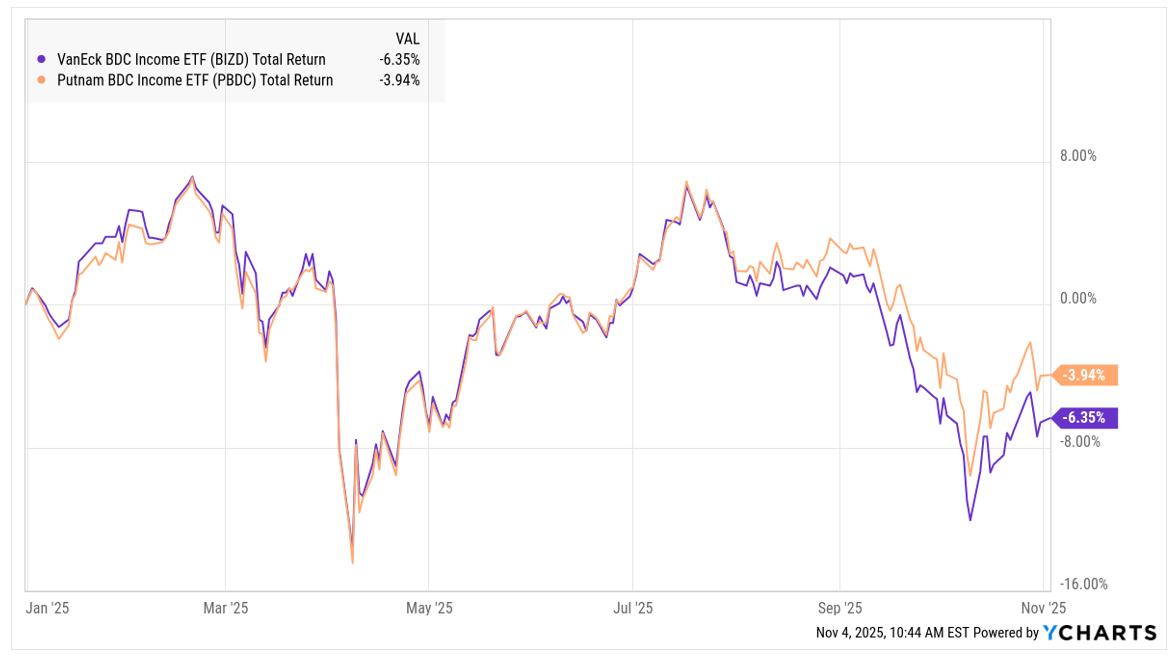BIZD And PBDC: Should You Buy BDC Funds Despite Credit Worries?

Image Source: Pixabay
JPMorgan Chase & Co. CEO Jamie Dimon recently warned of “cockroaches” when it came to the private credit market. His point was simple: when you see one problem loan blow up in private credit, you should assume there are more you haven’t seen yet. That’s why “BDCs” are noteworthy right now.
Business development companies, or BDCs, are an established public-market proxy for private credit risk. A BDC is a pass-through lending vehicle. It does not pay corporate income tax as long as it distributes most of its earnings. In exchange, it lends money directly to middle-market private companies, mostly through senior, first-lien, floating-rate loans.
BIZD, PBDC (YTD % Change)

Here is the problem: BDC ETFs — which bundle baskets of these lenders — have been weak year-to-date. Part of that is sentiment. Investors are starting to ask whether stress in private credit could spill over into BDC loan books. Some BDCs are trading at steeper-than-normal discounts to their reported net asset value (NAV), which tells you the market doesn’t fully believe the marks on those loans.
BDC ETFs have been popular with yield-focused investors thanks to their eye-catching income potential. First up is the VanEck BDC Income ETF (BIZD), which tracks the MVIS U.S. Business Development Companies Index. That benchmark weights BDCs by market capitalization — essentially giving the largest, most heavily traded names the biggest allocations.
The more thoughtful alternative, in my view, is the Putnam BDC Income ETF (PBDC). It’s much smaller, with about $247 million in assets compared with BIZD’s $12.6 billion, but I prefer its active approach.
Because the investable BDC universe is relatively small, PBDC’s holdings overlap significantly with BIZD’s. Even so, since its launch, the fund has consistently added value through active positioning. Over the same three-year period, PBDC delivered an 18.7% total return, outperforming both BIZD’s 15.5% and the S&P BDC Index’s 16.1%, while maintaining a comparable 9.8% 30-day SEC yield.
More By This Author:
Cloudflare: A Tech Name To Trade After Recent BreakoutQBTS: An Attractive "Pure-Play" In Quantum Computing
AAPL: The Big Tech Stock Wall Street Keeps Getting Wrong



